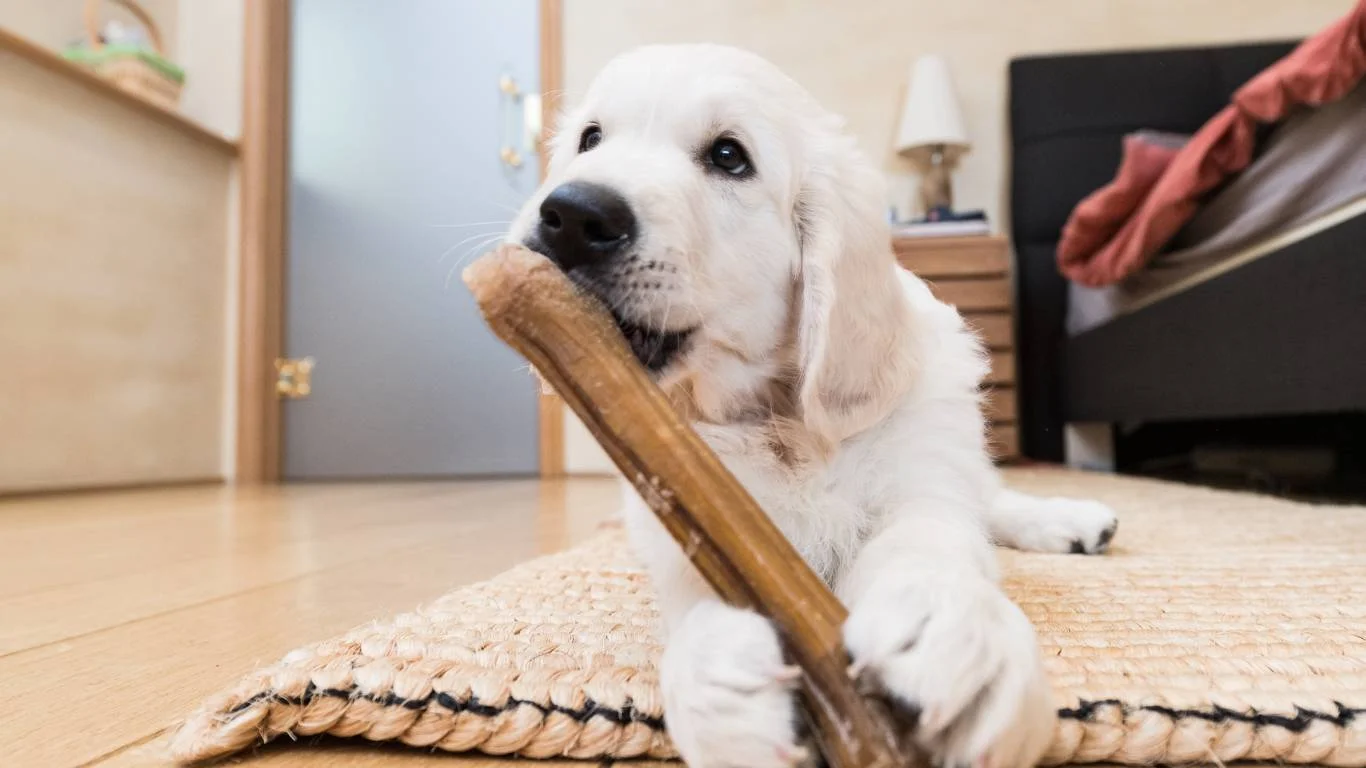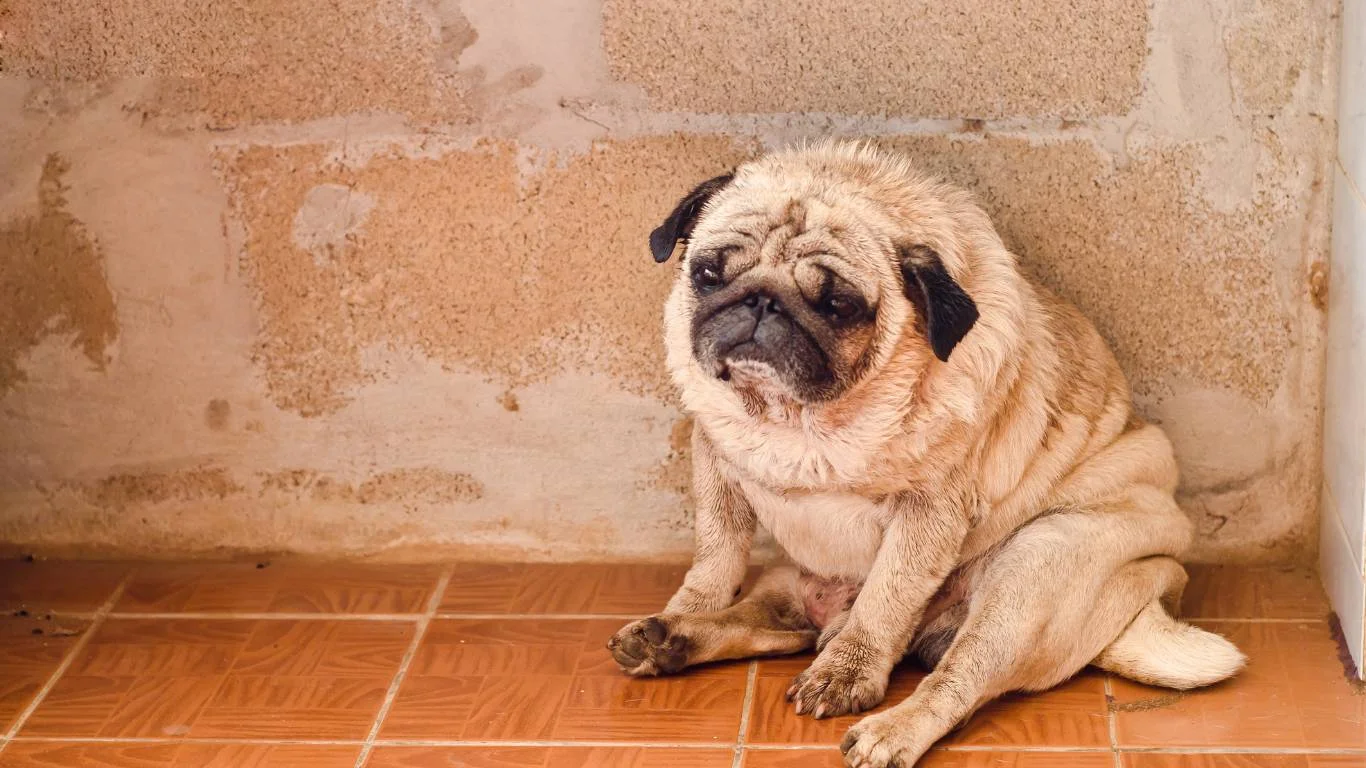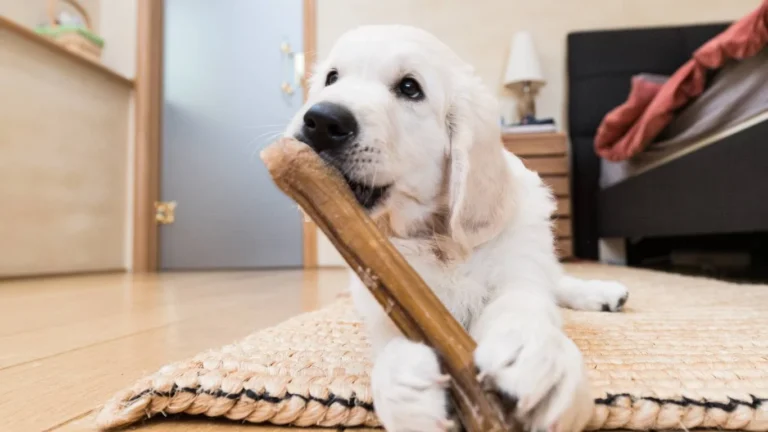What to Do If Your Dog’s Nails Are Splitting: Quick Fixes & Pro Tips
So, you’ve just noticed something weird with your pup’s paws—maybe you were playing fetch or giving them a bath, and bam, one of their nails looks cracked, jagged, or even split down the middle. It’s one of those things that makes you stop and go, “Yikes… what do I do now?” Trust me, you’re not alone—I’ve had more than a few clients come into the clinic in full panic mode, asking what to do if your dog’s nails are splitting. As someone who’s worked in veterinary care with a strong focus on pet nutrition, I can tell you this isn’t just a cosmetic issue—it can be painful for your dog and even lead to infections if not handled properly. Let’s walk through it together.
Understanding Why Dog Nails Split

First things first—why does this even happen? Nail splitting isn’t just about them catching a toenail on the couch (though, yep, that’s super common). There are actually a bunch of reasons that can cause this, and some of them might surprise you.
1. Natural Wear and Tear
Dogs that spend a lot of time running on pavement or rocky terrain often have tougher nails, but even they aren’t immune. I’ve seen active pups—like one super energetic border collie named Luna—split a nail clean in half after an intense play session. Over time, friction and pressure can create weak spots, and boom, a split happens.
2. Overgrown Nails
This one’s a biggie. If your dog’s nails are too long, they’re way more likely to catch on things or bend at weird angles. That pressure? It can cause a crack or split, especially near the base where there’s a blood supply (also known as the quick). I’ve personally had to help clip nails that curled so much they dug into the paw pad—it’s heartbreaking, but very preventable.
3. Nutritional Deficiencies
This is where my nutrition background kicks in. Just like us, dogs need the right balance of vitamins and minerals to keep their nails strong and healthy. If they’re not getting enough biotin, zinc, or certain amino acids, their nails can become brittle and prone to cracking. I often ask pet parents what food their dog’s eating when we see recurring nail issues—it’s almost always part of the puzzle.
4. Medical Conditions
Sometimes, nail problems are a symptom of something deeper. Conditions like hypothyroidism, autoimmune disorders, or fungal infections can show up in the form of brittle, breaking nails. So, if your pup’s nails are constantly splitting or if more than one is affected at the same time, it’s definitely time to get your vet involved.
First Aid Tips for a Split Nail

Okay, let’s say the worst has happened and you’ve got a dog with a split nail on your hands—what now? Before you go rushing to Google or spiraling into panic (we’ve all been there), here’s what I usually recommend to pet parents in the clinic:
Step-by-Step First Response
- Stay calm. Your dog feeds off your energy. If you’re anxious, they’ll be anxious too.
- Inspect the nail. If it’s bleeding, apply gentle pressure with a clean cloth. You can use styptic powder (or even cornstarch in a pinch) to help stop the bleeding.
- Clean the area. Use a saline solution or warm soapy water to gently clean the paw. Avoid using alcohol or hydrogen peroxide—it stings and can slow healing.
- Wrap it up. Lightly bandage the paw to protect it from dirt and licking. I always keep vet wrap and gauze in my doggy first-aid kit—life saver!
- Call your vet. Especially if the split is deep, bleeding doesn’t stop, or your dog is limping. Better safe than sorry.
One time, a sweet little dachshund came in after catching a nail on a fence—and even though it looked minor, the nail had actually torn just above the quick. The owner did everything right at home, but we still needed to trim the nail back under sedation. The sooner you address it, the better the outcome usually is.
Preventing Nail Splits in the Future

Once your pup is on the mend, you’ll probably want to do everything you can to avoid this happening again (and fair enough—split nails are no fun for anyone). Here are a few tried-and-true tips I give my clients all the time:
Keep Nails Trimmed Regularly
This is hands-down the most effective way to prevent splitting. Aim to trim your dog’s nails every 3–4 weeks, or sooner if you hear them clicking on the floor. If your dog hates nail trims, try doing one paw at a time with lots of treats—it doesn’t have to be a full spa day.
Use the Right Tools
Not all nail clippers are created equal. Make sure you’re using a sharp, appropriate-sized clipper for your dog’s breed. And if you’re not confident trimming nails yourself, no shame in letting a groomer or vet tech handle it (that’s what we’re here for!).
Feed a Nail-Healthy Diet
Remember those nutrients we talked about earlier? Talk to your vet about foods rich in biotin, omega-3s, and other nail-friendly supplements. I’ve seen big improvements in dogs that switch to a high-quality diet or start on skin and coat supplements.
Watch for Signs of Trouble
If you notice your dog limping, licking a paw constantly, or favoring one leg, don’t ignore it. It could be an early sign of a nail issue—or something else entirely.
When to Worry About a Splitting Nail

While a lot of split nails can be treated pretty easily at home, there are definitely times when you should head straight to your vet. Trust me, after seeing countless cases in the clinic, I’ve learned that catching a serious issue early makes a world of difference. So how do you know when it’s time to swap out the home remedies for professional help?
Signs You Shouldn’t Ignore
- Persistent Bleeding: If bleeding doesn’t stop after 10-15 minutes, it’s time for a vet visit.
- Visible Pain: Limping, whining, or licking excessively at the paw are red flags.
- Swelling or Redness: These could be signs of infection brewing under the surface.
- Change in Nail Color: Darkening, especially near the base, can mean bruising or infection.
- Multiple Split Nails: If more than one nail is affected, it could point to an underlying health issue.
I remember one golden retriever, Max, who came in with what looked like a simple nail split. His owner thought it was no big deal at first. By the time they brought him in, the area was swollen and infected—it turned into a bigger (and costlier) situation than it needed to be. Moral of the story: when in doubt, get it checked out!
How Vets Treat Severe Nail Splits

Wondering what happens at the vet if your dog’s nail is seriously split? Let me walk you through it, because a lot of pet parents worry it’s going to be super traumatic (spoiler: it’s usually not as bad as you think).
Typical Vet Treatments
- Trimming Back the Nail: If the split is bad, the vet might trim it all the way back to remove the damaged section. Sometimes this needs sedation, especially if the nail is close to the quick and painful.
- Antibiotics: If there’s any sign of infection (even a little redness or oozing), antibiotics are often prescribed to knock it out fast.
- Pain Management: Pain meds or anti-inflammatories can make your pup much more comfortable while healing.
- Bandaging: The paw might get a light bandage to keep things clean and protected while it heals up.
And hey, if your vet suggests a minor surgery to fully remove the nail? Don’t panic. I’ve seen dogs bounce back so fast, it’s honestly incredible. They’ll usually act like nothing ever happened once the initial tenderness wears off.
Supporting Healing at Home

After you leave the vet’s office (or if you’re managing a minor split at home), there’s still some TLC needed to make sure your dog heals up properly. Based on my experience working alongside vets and caring for my own dogs, here’s what really helps:
Home Care Essentials
- Keep it Clean: Gently clean the paw daily with a vet-approved antiseptic or saline solution.
- Prevent Licking: Easier said than done, I know! But using a soft cone (or a comfy donut collar) helps a ton to stop obsessive licking.
- Limit Activity: No zoomies, rough play, or hiking adventures until the nail fully heals. Short leash walks are usually fine, though.
- Monitor for Signs of Trouble: Watch for swelling, foul odors, or discharge—anything that could hint at infection.
One trick I always share with clients: use baby socks or little dog booties when your pup needs to go outside. It keeps dirt and bacteria away from the wound while they’re healing. Plus, it’s ridiculously cute.
Long-Term Care for Nail Health
Now that you’ve navigated the crisis, it’s smart to think about long-term nail care strategies. Honestly, after seeing how miserable some pups get from nail injuries, I’m a big fan of making nail maintenance a regular (and low-stress) part of your dog’s life.
Make Nail Trimming Positive
Conditioning your dog to love (or at least tolerate) nail trims can seriously change the game. Start slow—treats for sniffing the clippers, treats for letting you touch their paws, treats for tiny trims. I worked with a super shy rescue dog once, and it took weeks, but eventually she was chill enough to get a full manicure without a fuss!
Consider Filing Instead of Clipping
If your dog is scared of the “clip” noise, using a nail grinder (aka Dremel tool made for pets) can be a quieter, gentler alternative. Just introduce it gradually—and always reward them like crazy at first.
Watch Their Diet
Since nutrition plays such a big role, don’t overlook your dog’s diet. Nails made from healthy keratin grow stronger and are less likely to split. If you’re unsure whether your dog’s food is hitting all the right notes, your vet (or even a veterinary nutritionist) can offer great advice. I’ve seen some amazing transformations just by tweaking a dog’s diet a little.
Regular Vet Checks
Finally, if your dog keeps having nail issues, it’s worth mentioning at your next vet visit. Sometimes chronic problems signal deeper health conditions that need attention. Early intervention = better outcomes every single time.
What to Do If Your Dog’s Nails Are Splitting Frequently

If you find yourself constantly dealing with split nails, it’s more than just a random one-off issue. I’ve seen this happen with several dogs in the clinic—different breeds, sizes, ages—and more often than not, there’s something deeper going on. Let’s talk about how to troubleshoot persistent nail splitting and what to do if it keeps coming back.
1. Rule Out Underlying Health Issues
Chronic nail problems can sometimes be a signal from your dog’s body that something’s off. One of the first things I suggest is a thorough health check. Some possible culprits include:
- Hypothyroidism: Low thyroid levels can mess with your dog’s coat, skin, and yep—even nails. Split, brittle nails are a common symptom.
- Lupoid onychodystrophy: A fancy term for an autoimmune condition that specifically affects nails. It’s not super common, but I’ve seen it in breeds like German Shepherds and Setters.
- Fungal or bacterial infections: These can hang out under the nail bed and weaken the structure of the nail itself.
If your vet suspects any of the above, they might run bloodwork or recommend skin/nail biopsies to get to the root of it. Catching these early can save your dog a lot of discomfort—and save you from repeating the same nail drama month after month.
2. Consider a Supplement Plan
Supplements can really make a difference when it comes to strengthening your dog’s nails from the inside out. I’m not talking about tossing them just any generic “pet vitamin”—I mean targeted, quality ingredients backed by science (and ideally, approved by your vet).
Here are a few that I’ve personally seen help:
- Biotin: A go-to for keratin production. I’ve recommended this to several clients with great results.
- Omega-3 fatty acids: Anti-inflammatory and good for skin and coat health, too.
- Zinc and Vitamin E: Key for cell repair and immune support.
Just be sure to consult your vet before starting anything new—because too much of a good thing can backfire, especially with fat-soluble vitamins.
Breed-Specific Nail Considerations

Did you know some breeds are just naturally more prone to nail issues? It’s true. And as someone who’s worked with a wide range of dogs, I can say breed definitely plays a role in nail strength and growth patterns.
Breeds That May Need Extra Nail Care
- Greyhounds: Their nails grow fast and tend to be brittle—regular maintenance is key.
- Dachshunds: Their low-to-the-ground posture and digging instincts make nail injuries more likely.
- Spaniels and Setters: Prone to autoimmune nail disorders.
- Large breeds (like Labs or Shepherds): Their weight puts more pressure on the nails, making splits more painful and noticeable.
If your dog falls into one of these categories, it’s a good idea to get into a steady nail-care routine, and don’t hesitate to ask your vet about any breed-specific risks or red flags.
Tools and Tips That Make Nail Care Easier
I’ve seen a lot of trial and error when it comes to dog nail care. From reluctant pups to nervous owners, the right tools can seriously change the experience—for both of you. Here are a few of my go-to recommendations:
Favorite Nail Care Products
- Sharp guillotine or scissor-style clippers: Dull blades crush rather than cut, which can cause splitting. Always invest in a quality pair.
- Nail grinders: Perfect for smoothing rough edges and avoiding cracks after clipping. Just go slow and introduce gradually!
- Styptic powder: A must-have for any accidental quick nicks. Stops bleeding fast.
One tip I love sharing: keep the nail care positive. Use high-value treats (yes, even the messy ones), praise, and calm vibes. Make it feel more like a chill grooming session than a wrestling match. The more positive experiences your dog has, the easier it gets every time.
Staying Ahead of Nail Health Problems
At the end of the day, knowing what to do if your dog’s nails are splitting means being proactive, not just reactive. Split nails don’t have to become a regular headache—they’re preventable in most cases with a bit of care, awareness, and consistency.
Here’s a quick checklist to keep in mind for future nail health:
- Check nails weekly for cracks, splits, or signs of infection.
- Keep up with monthly trims—set a phone reminder if needed.
- Feed a balanced, nutrient-rich diet or discuss supplements with your vet.
- Talk to your vet if you notice repeat nail issues or discomfort.
- Be patient, gentle, and consistent—it really does pay off.
Whether you’re dealing with a one-time nail emergency or an ongoing issue, you’re not alone. I’ve been in the exam room with worried pet parents more times than I can count, and the most important thing is to take it one paw at a time. You’ve got this—and so does your dog.
References
Disclaimer
This article is based on my experience as a veterinary assistant with a focus on nutrition and is intended for informational purposes only. It is not a substitute for professional veterinary advice, diagnosis, or treatment. Always consult your veterinarian with any questions you may have regarding a medical condition or your pet’s health.






